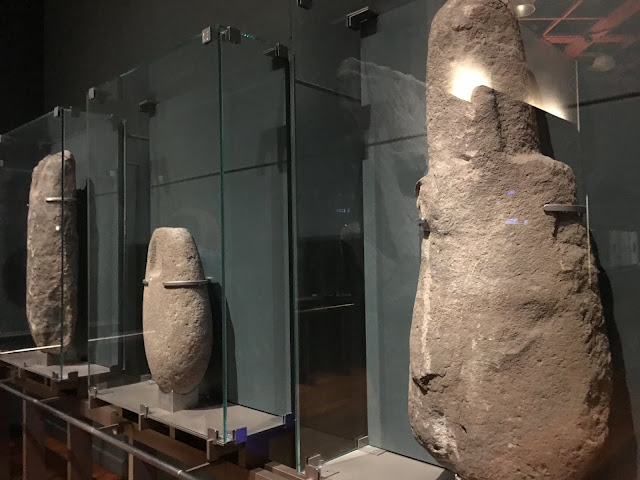Travel Date: 2019/08/31-09/02
I enjoyed walking around and exploring the various exhibitions. The National Taiwan Museum of Prehistoric Culture is quite spacious, and you have the option to purchase tickets specifically for the museum or joint tickets to also visit the Beinan Site. It provides a great opportunity to learn not only about the lives of prehistoric people in Taiwan but also about the aboriginal cultures.
National Taiwan Museum of Prehistoric Culture (國立臺灣史前文化博物館)
Located in Taitung City, the National Museum of Prehistory is the most significant national museum for anthropological and natural history in Taiwan. It is also the only national museum in eastern Taiwan that focuses on Taiwanese prehistoric culture and aboriginal heritage. The museum encompasses the Beinan site, which covers about 10 hectares and includes the Beinan Relics Park, as well as the Nanke Archaeological Museum in the Tainan Science Park. The building itself was designed and constructed by American architect Michael Graves.
The discovery of the Beinan Cultural Site in July 1980, during the construction of the South Beinan Station (now Taitung Station) by the Taiwan Railway Administration, led to the excavation of a large number of cultural relics. Under the leadership of Professor Song Wenxun and Professor Lian Zhaomei from the Department of Anthropology at National Taiwan University, the excavation became the largest Neolithic excavation site in Taiwan. Through years of rescue, research, and planning, the National Taiwan Museum of Prehistoric Culture was established and showcases three main themes: Taiwan's natural history, Taiwan's prehistoric history, and the cultures of the South Island tribes. While the museum is not directly built on the archaeological site, a Beinan Cultural Park was established to preserve the site.
In April 1989, the Ministry of Education submitted the "National Taiwan Prehistoric Culture Museum Planning Program," which was approved by the Executive Yuan in July of the same year. The Preparatory Office of the National Taiwan Prehistoric Culture Museum was then established on February 1, 1990. In November 1990, the Ministry of the Interior approved the conversion of protected areas near Beinan Station into park land for museum construction. However, due to the expansion of the Beinan site in 1991, large-scale buildings were deemed unsuitable for construction. As a result, the Preparatory Office requested assistance from the Ministry of Education, and a museum construction site in Taiti County was planned.
In 1995, the Institute of History and Philology of the Academia Sinica, commissioned by the National Science Council, conducted a site investigation in the Tainan Science Park. A total of 58 archaeological sites were discovered, along with the newly developed Tainan specific industrial zone and Shugu Industrial Park. The new project for the National Taiwan Museum of Prehistoric Culture began in 1998, and the prehistoric pavilion underwent a trial operation and held an opening ceremony in 2001. The reconstruction of the prehistoric pavilion was completed and officially opened in 2002.
In 2004, the Ministry of Education approved the establishment of the Nanke branch under the Prehistoric Museum. It was also decided to construct the Nandao Cultural Park. In 2007, the Executive Yuan approved the project for the South Branch of the Prehistoric Museum, with a construction budget of NT$1.5 billion. The museum, temporarily named "National Taiwan Museum of Prehistoric Culture, Nanke Archaeological Museum," covers an area of 2.44 hectares. In October 2008, the East Broadcasting Center of the Aboriginal TV Station opened in the prehistoric pavilion, and in 2015, the prehistoric pavilion introduced its first ticket purchase service.

















0 komentarze:
Post a Comment